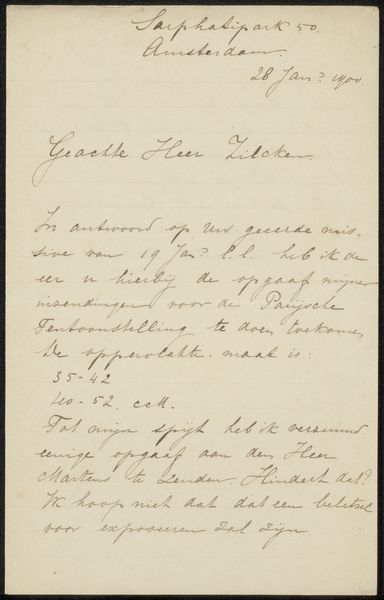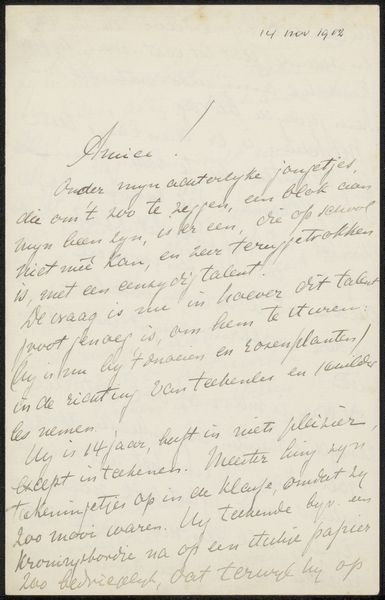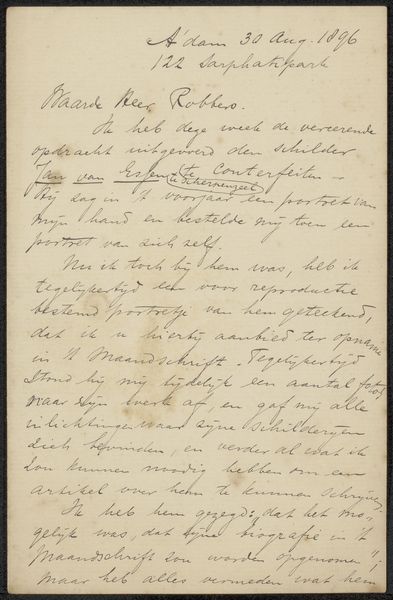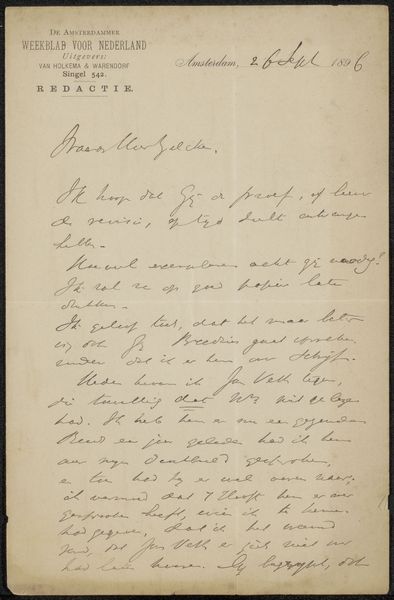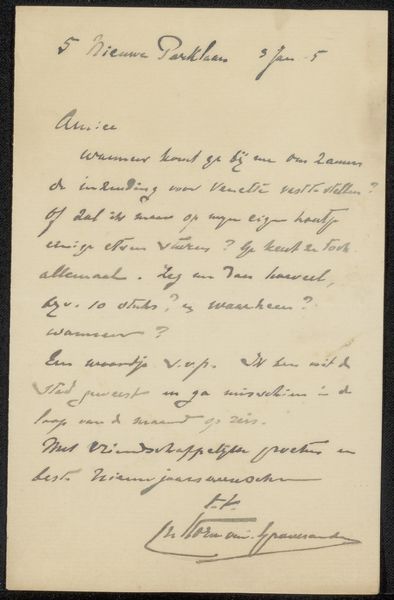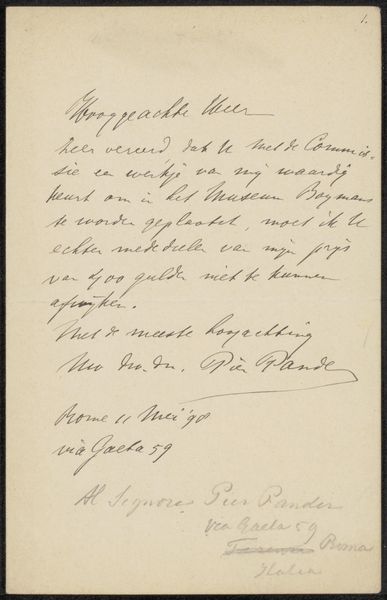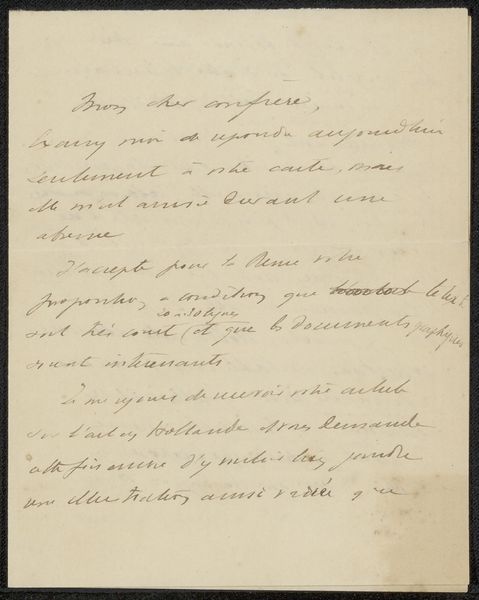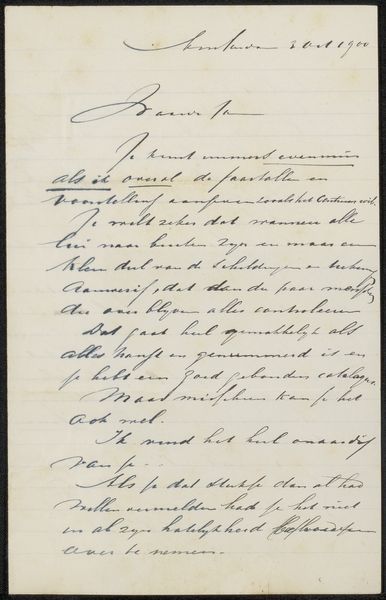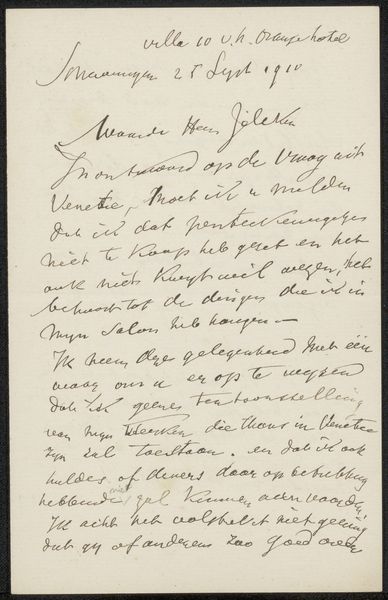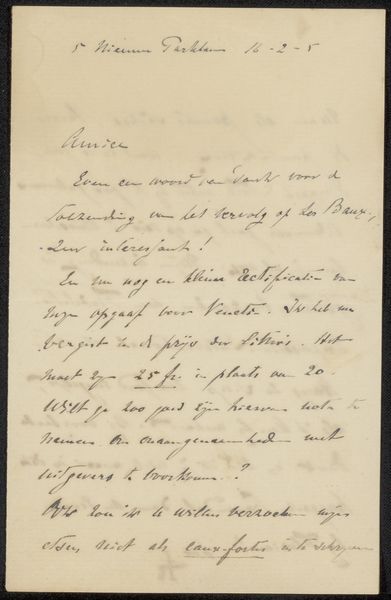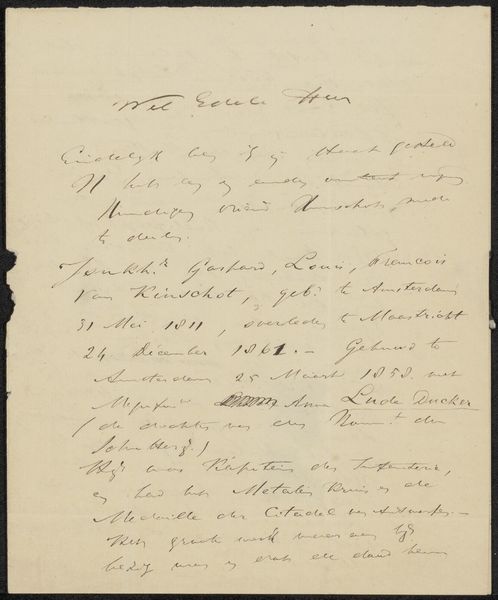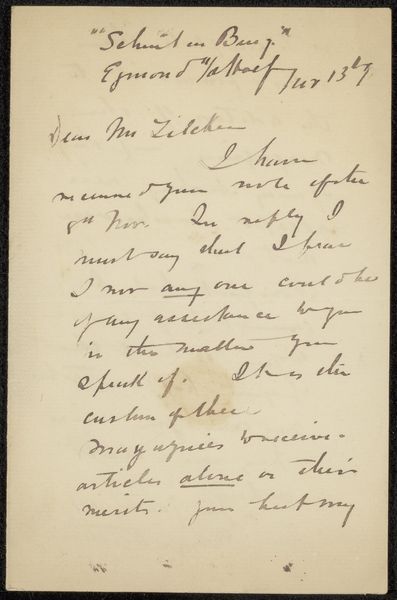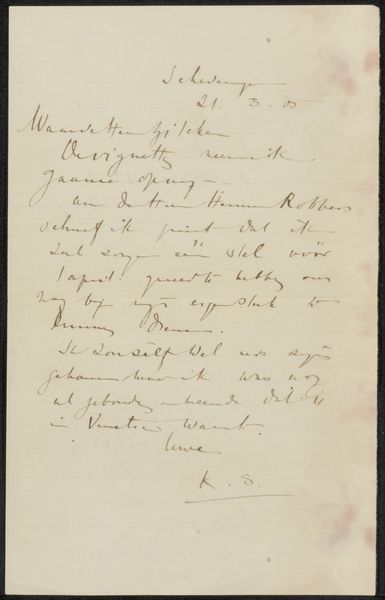
drawing, paper, ink
#
portrait
#
drawing
#
paper
#
ink
#
calligraphy
Copyright: Rijks Museum: Open Domain
Editor: So, this piece is titled "Brief aan Philip Zilcken," a drawing in ink on paper by Evert Pieters, dating sometime between 1903 and 1929. It looks like a handwritten letter. The calligraphy itself is almost like the art here. What can you tell me about the cultural implications of something like this? Curator: Well, beyond the intimate message for the recipient, this work tells us a great deal about the culture of artistic exchange in the early 20th century. We see artists using letters as more than just communication. Here, the handwriting itself elevates a simple note to an artistic expression, even performance. It makes you wonder, doesn't it, about the social networks and institutions that fostered this type of artistic correspondence. Think of the galleries that showed their work. Editor: That's interesting, the idea of it as a performance of sorts. So you’re saying that the act of writing and sending this, beyond the content, becomes the art? Curator: Precisely! Consider also that this letter could be seen as a curated object even then. Think of the artistic value people attributed to correspondence at a time when letter-writing was a primary means of communication and before mass electronic media. And how does the fact that it survived until now affect our interpretation of it? Editor: That's fascinating. It makes me think about the intent of Pieters – was it deliberately artistic, or was it a functional document elevated by later interpretation? Did people treat their writing as art at the time? Curator: A key question! Perhaps a little of both? Its preservation and exhibition suggest an intentionality, even if originally functional. We need to delve into the history of artist correspondence during that period to fully grasp its significance. Do you feel differently about it after thinking about that history? Editor: Absolutely! I now see it as part of a larger social and artistic fabric, which makes it much more compelling than just a simple letter. Thanks for shedding some light on that! Curator: My pleasure! It's crucial to view art within the social and cultural environment of its time. We often overlook the cultural significance and everyday contexts which shape the creation and interpretation of these pieces.
Comments
No comments
Be the first to comment and join the conversation on the ultimate creative platform.
